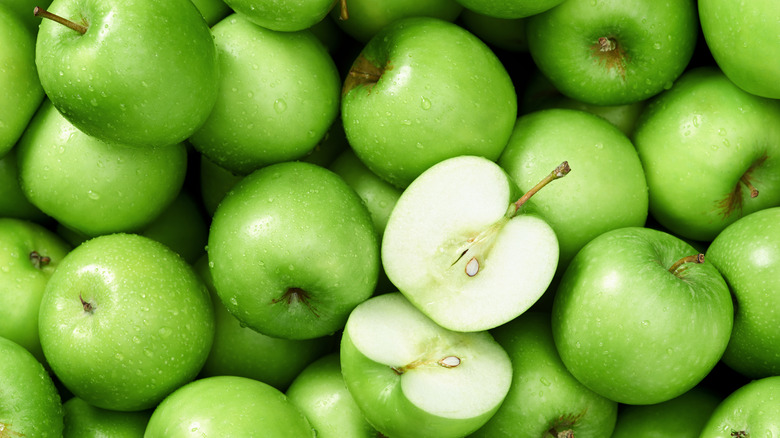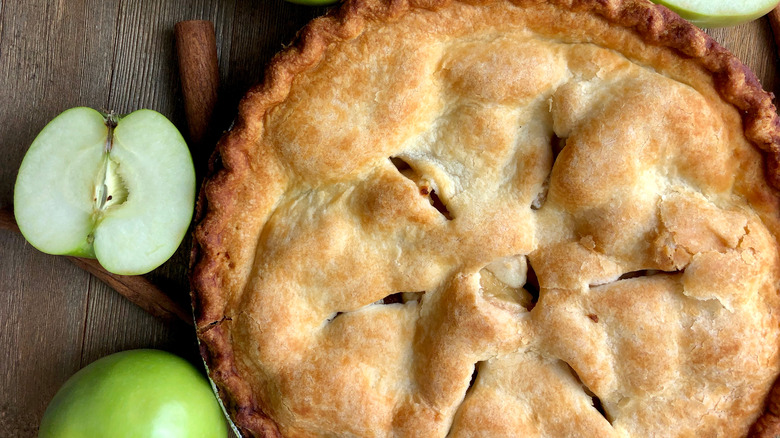The Real Woman Behind The Granny Smith Apple Moniker
Here's something to chew on: There are approximately 7,500 apple varieties harvested around the globe, according to SelectHealth. And a whopping one-third of these crisp fruits are grown in the United States. The age-old proverb, "An apple a day keeps the doctor away" rings true to a certain degree, as apples are rich in vitamin C, fiber, and antioxidants, help promote heart, brain, and gut health, and lower the risk of type 2 diabetes and cancer, per Healthline.
One of the most popular types of apple in the world is the Granny Smith, which is known for its bright green skin, tart palate, firm texture, and versatility. Granny Smith apples have been deemed ideal for baking apple pies, tarts, cobblers, and other goodies thanks to their pleasant flavor as well as their ability to retain their shape in the presence of high heat, as TasteAtlas suggests. The Granny Smith apple is such an iconic commodity, there is even a Crayola crayon that sports the appetizing hue. But where did the apple's namesake, Granny Smith, come from? As it turns out, Granny Smith was indeed a real person, and her legacy has lived on in the form of a nutritious, beloved treat.
Maria Ann Smith cultivated a new apple tree
Like many treasured products throughout culinary history, including brownies, popsicles, beer, and Champagne, it can be said that the Granny Smith apple was a serendipitous creation. It all started with an English-born woman by the name of Maria Ann Smith, who lived on a farm in Kissing Point outside Sydney, Australia with her husband and their five children, according to the Australian Dictionary of Biography. The Smiths were orchardists who cultivated an array of fruits such as pears, apricots, and of course, apples. Smith would bake pies with homegrown ingredients and sell them at a market in Sydney (via Mental Floss).
As the story goes, after Smith cut up apples to use in her pies and other recipes, she would toss the scraps into a makeshift compost mound near a creek that ran through their 24-acre land. One day, Smith asked a neighbor to inspect some sprouted seedlings, because she couldn't accurately identify the vivid green species. According to HGTV, it turns out that the "chance seedlings" were a cross-pollination between the French crab apple and the European wild apple. Sadly, Smith passed away in 1870, shortly after her sweet discovery, but local farmers took the reins and continued to grow the new apple variety.
Today, the city of Ryde (formerly Kissing Point) hosts a Granny Smith Festival each year to celebrate the life of the apple's inventor.

